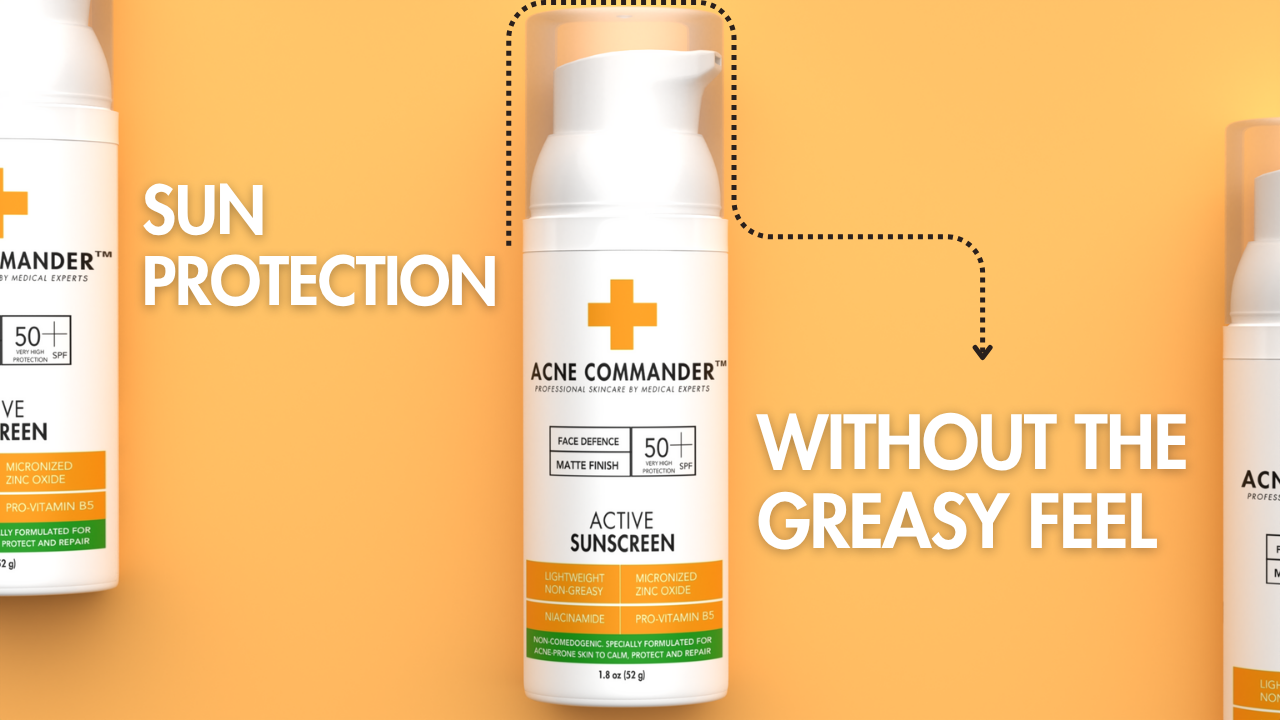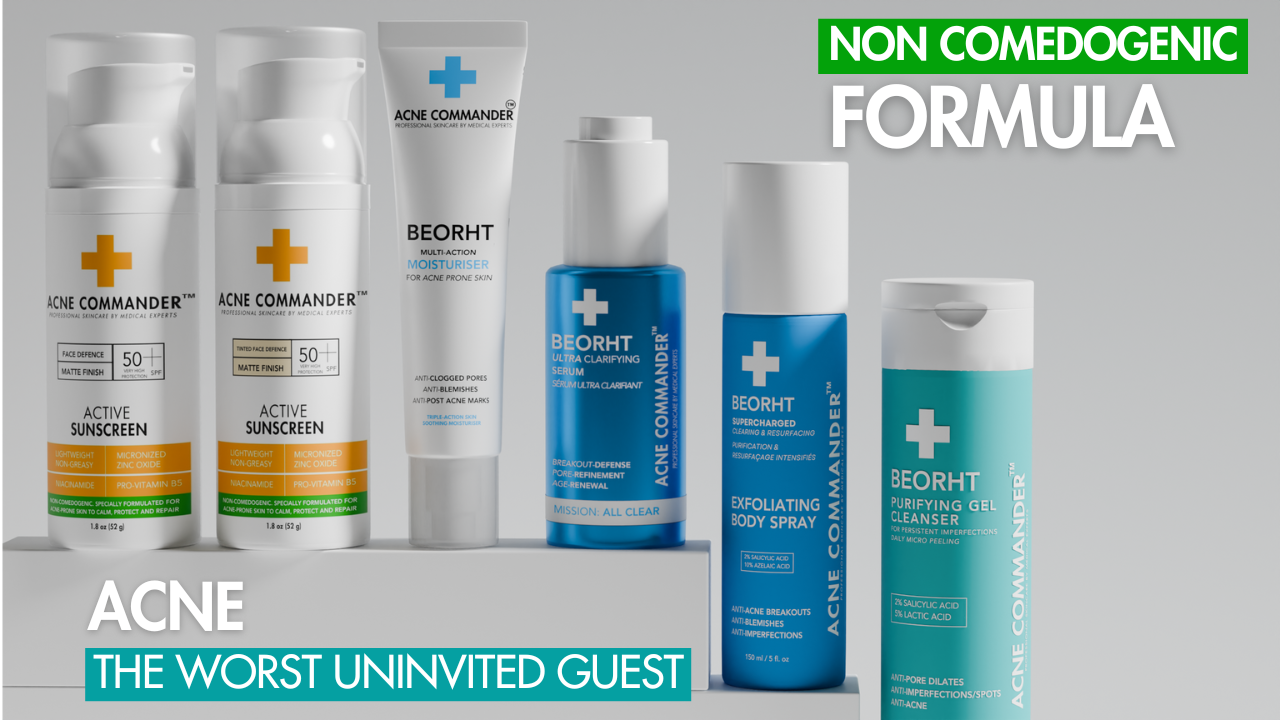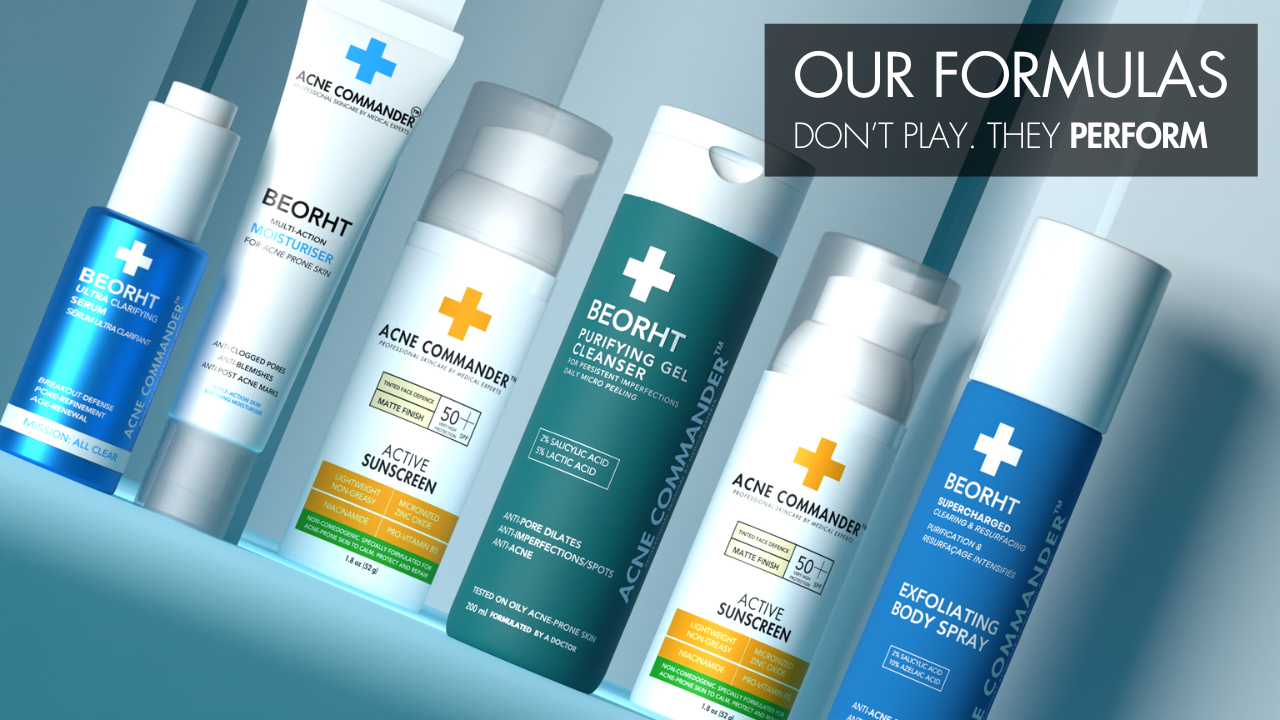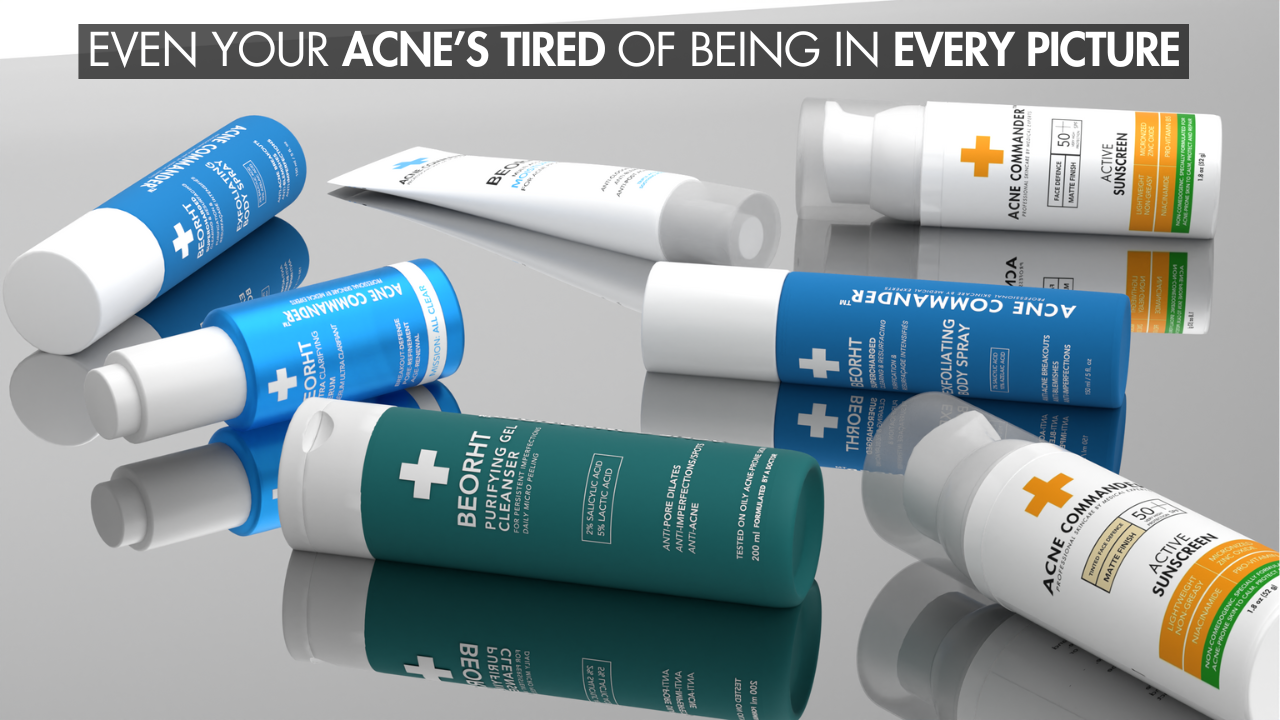Oil cleansing has taken the skincare world by storm and not just as a trendy buzzword. It’s grounded in science and built on a simple but powerful principle: oil dissolves oil. This method has especially gained traction among individuals with sensitive and acne-prone skin because it offers a gentle yet effective way to cleanse without over-drying or irritating the skin.
If you’re struggling with breakouts, blackheads, or clogged pores, you might be hesitant to put oil on your face. After all, doesn’t oil cause acne? Surprisingly, when used correctly, oil can actually be one of your skin’s best allies.
The secret lies not just in the method but in the product. Beorht Purifying Gel Cleanser by Acne Commander stands out as a specially formulated oil-based cleanser designed for acne-prone skin. It uses non-comedogenic, skin-friendly oils in a lightweight gel texture to cleanse thoroughly without clogging pores or causing further breakouts.
In this comprehensive guide, we’ll explore how oil cleansing works, why it’s beneficial for acne-prone skin, common mistakes to avoid, and how to integrate it seamlessly into your skincare routine.
What Is Oil Cleansing?
Oil cleansing is a skincare method that uses an oil-based product to cleanse the skin by dissolving excess sebum, makeup, sunscreen, and dirt. It contrasts with traditional foaming cleansers, which often contain harsh surfactants that strip the skin of its natural oils.
The idea is simple: like dissolves like. Oils are lipophilic, meaning they attract other oils, including those deep within your pores. When you apply an oil-based cleanser to dry skin, it binds with the sebum, dead skin, and debris. Once water is added, the product emulsifies transforming into a milky liquid and lifts away the impurities.
Unlike soaps or harsh detergents, oil cleansing supports your skin’s natural barrier and microbiome. A well-formulated oil cleanser like Beorht Purifying Gel Cleanser by Acne Commander can maintain this balance while targeting the root causes of acne.
Why Traditional Cleansers Often Fall Short
Many acne sufferers turn to foaming or astringent cleansers in hopes of drying out their skin and “killing” acne. However, these products often do more harm than good:
-
Stripping the skin: Harsh surfactants remove natural oils, leaving skin dry and compromised.
-
Overstimulation of oil glands: Stripped skin responds by producing more oil, worsening the cycle.
-
Barrier damage: Without its protective lipids, the skin becomes more susceptible to irritation and inflammation.
Oil cleansing offers an effective alternative by respecting the skin’s ecosystem while gently but deeply purifying it.
How Oil Cleansing Helps Acne-Prone Skin
Despite its name, oil cleansing doesn’t “add” oil to your skin. Instead, it balances oil production and unclogs pores two of the biggest acne triggers.
Let’s break down the benefits:
1. Dissolves Hardened Sebum and Debris
Sebum, dead skin cells, and pollutants can harden inside pores, forming comedones (blackheads and whiteheads). Oil cleansing softens and dissolves this buildup, making it easier to clear skin without scrubbing or causing microtears.
Beorht Purifying Gel Cleanser by Acne Commander features a gel-to-oil formula that penetrates deep into pores, lifting away impurities and leaving the skin fresh, not greasy.
2. Removes Stubborn Makeup and Sunscreen
Water-based cleansers often struggle to fully remove long-wear foundation or high-SPF sunscreen, both of which can contribute to breakouts if left on skin. Oil cleansers cut through these layers effortlessly.
Using Beorht Purifying Gel Cleanser by Acne Commander at night ensures that all traces of makeup and sunscreen are thoroughly removed, setting the stage for clearer skin.
3. Regulates Oil Production
When you strip the skin’s natural oils, it may respond by overproducing sebum, leading to more clogged pores. Oil cleansing maintains hydration and tells your skin it doesn’t need to go into overdrive.
A balanced oil-to-water cleansing method creates a calm environment for acne-prone skin to heal.
4. Hydrates and Soothes Inflammation
Non-comedogenic oils like jojoba, sunflower, and grapeseed mimic the skin’s natural lipids and have anti-inflammatory properties. These oils reduce redness, swelling, and irritation common with acne.
Beorht Purifying Gel Cleanser by Acne Commander is enriched with calming botanical oils that hydrate while supporting a healthier skin barrier.
5. Minimizes Pore Congestion Over Time
When used consistently, oil cleansing reduces the chances of clogged pores. This leads to fewer blackheads, less congestion, and a clearer complexion overall.
With regular use, many users of Beorht Purifying Gel Cleanser by Acne Commander report fewer breakouts and a visible reduction in pore size.
Explore detailed information for Acne Commander's Beorht Purifying Gel Cleanser. Click Here
Common Myths About Oil Cleansing
Myth 1: Oil Will Make You Break Out
Not all oils are created equal. While comedogenic oils (like coconut or cocoa butter) can clog pores, non-comedogenic oils used in properly formulated cleansers won’t. In fact, they help dissolve the gunk that causes breakouts.
Myth 2: Oil Cleansing Is Only for Dry Skin
Oil cleansing is suitable for all skin types, including oily and acne-prone. It’s about what you cleanse with, not just how.
Myth 3: You Don’t Need a Second Cleanse
While oil cleansers break down surface-level impurities, following up with a water-based cleanser removes any remaining residue. This two-step process, known as double cleansing, ensures clean, breathable skin.
How to Use Oil Cleansing in Your Routine
Here’s a step-by-step guide for integrating oil cleansing into your skincare regimen:
Step 1: Choose the Right Cleanser
Start with an acne-safe, non-comedogenic cleanser like Beorht Purifying Gel Cleanser by Acne Commander. It’s designed specifically for acne-prone skin, free from pore-clogging ingredients and artificial fragrances.
Step 2: Apply to Dry Skin
Pump a small amount into clean, dry hands and massage into your face using gentle, circular motions. Focus on congested areas such as the T-zone or jawline. Take 1–2 minutes to work the oil in.
Step 3: Emulsify with Warm Water
Add a little warm water to your hands and continue massaging. The cleanser will turn milky, loosening up any trapped debris in your pores.
Step 4: Rinse Thoroughly
Use lukewarm water to rinse off the emulsified cleanser. Avoid using very hot water, as it can strip your skin and increase sensitivity.
Step 5: Follow with a Water-Based Cleanser
This step helps to remove any residual oil and ensures your skin is left clean without feeling greasy. Choose a gentle, sulfate-free cleanser.
Step 6: Finish With Skincare
Apply your toner, acne treatments, serums, or moisturizers as usual. Oil cleansing sets the foundation for the rest of your routine to absorb more effectively.
How Often Should You Oil Cleanse?
For acne-prone skin, oil cleansing is best done once daily, ideally in the evening. This removes makeup, SPF, and pollutants accumulated throughout the day. In the morning, a water-based cleanse is usually sufficient unless your skin feels particularly oily or congested.
How to Know If It’s Working
Give your skin time to adjust. Some people experience a mild purge in the first week as the oils loosen congestion. This is temporary and usually subsides quickly.
Signs that oil cleansing is working:
-
Fewer blackheads and whiteheads
-
Less oily T-zone
-
Reduced redness and inflammation
-
Skin feels smoother and more balanced
-
Active breakouts heal faster
Remember, consistency is key and using a quality product like Beorht Purifying Gel Cleanser by Acne Commander can make a noticeable difference in just a few weeks.
What to Avoid in Oil Cleansers for Acne
When selecting an oil cleanser, always check for these red flags:
-
Comedogenic oils (e.g., coconut, flaxseed, wheat germ)
-
Heavy or greasy textures that leave residue
-
Added fragrances or essential oils that can irritate sensitive skin
-
Alcohol or sulfates that strip moisture
The ideal cleanser, like Beorht Purifying Gel Cleanser by Acne Commander, avoids all of these while delivering powerful cleansing and soothing benefits.
Real Results: What Users Are Saying
Here’s what some real users of Beorht Purifying Gel Cleanser by Acne Commander have shared:
“This cleanser changed my skin! I’ve struggled with hormonal acne for years, and this is the first product that cleared my pores without drying me out.” Maira, 28
“I was nervous to use an oil cleanser, but this gel-oil blend is perfect. It leaves my skin clean, calm, and soft, not greasy. Highly recommended for anyone with breakouts.” Daniyal, 22
“It took a couple of weeks, but I’m finally seeing a real reduction in blackheads and those deep under-the-skin bumps.” Amna, 31
FAQs
Q1: Is oil cleansing safe for acne-prone skin?
Yes, especially when using a non-comedogenic formula like Beorht Purifying Gel Cleanser by Acne Commander, which is specifically designed for breakout-prone complexions.
Q2: Will oil cleansing clog my pores?
Not if you're using acne-safe oils and rinsing thoroughly. Comedogenic oils are the problem, not oil cleansing itself.
Q3: Can oil cleansing help with blackheads and whiteheads?
Absolutely. The process helps to loosen hardened sebum and buildup that cause these issues.
Q4: How long before I see results?
Most users notice improvement within 2–4 weeks. Some may experience a brief purging phase.
Q5: Can I oil cleanse if I wear heavy makeup?
Definitely. In fact, oil cleansing is the best way to remove waterproof or long-lasting makeup.
Q6: How often should I oil cleanse for acne-prone skin?
Oil cleansing should be done once a day, preferably in the evening, to remove makeup, sunscreen, and daily pollutants. In the morning, a gentle water-based cleanse is usually sufficient unless your skin feels particularly oily or congested.
Q7: Can oil cleansing cause acne purging?
Yes, when you first start oil cleansing, you might experience a mild purge as oils loosen clogged impurities. This is normal and temporary, usually lasting around one to two weeks.
Q8: Can oil cleansing replace my regular face wash?
Yes, oil cleansing can replace traditional face washes, especially for acne-prone skin. For best results, follow up with a water-based cleanser to ensure no residue is left behind.
Q9: Is oil cleansing suitable for sensitive skin?
Yes, oil cleansing is safe and gentle for sensitive skin, as long as you use a non-irritating, non-comedogenic product like Beorht Purifying Gel Cleanser by Acne Commander. It helps soothe and hydrate sensitive skin without causing irritation.
Q10: How do I know if oil cleansing is working for me?
Signs that oil cleansing is working include fewer blackheads and whiteheads, reduced redness and inflammation, less oily skin, and smoother, more balanced skin overall. Be patient results typically take a few weeks.
Conclusion
Oil cleansing isn't just a fad, it's a skin-transforming technique rooted in gentle, effective cleansing science. For acne-prone skin, it offers a powerful way to decongest pores, regulate oil, and maintain hydration without irritation.
The key to success is choosing the right cleanser. Beorht Purifying Gel Cleanser by Acne Commander provides a unique gel-to-oil formula that combines deep cleansing power with soothing, acne-safe ingredients. With consistent use, it can help you reduce breakouts, smooth your skin, and regain confidence in your complexion.
Call to Action
Say goodbye to harsh, drying cleansers and experience the power of oil cleansing for acne-prone skin. Try Beorht Purifying Gel Cleanser by Acne Commander today, a gentle yet powerful formula that lifts impurities, dissolves sebum, and keeps your skin calm, balanced, and blemish-free.






